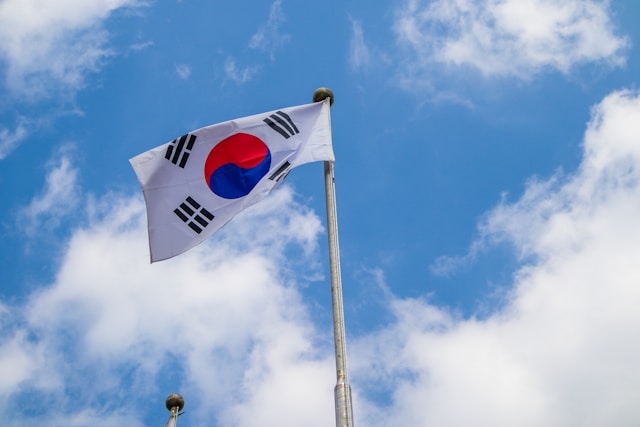
Key takeaways:
- The dual-track charging standards for court fees in enforcing foreign judgments in China persist, with consistent application across courts: per-piece (up to CNY 500) for recognition or non-monetary cases, and progressive based on the judgment amount for combined R&E.
- For monetary judgments, the step-by-step approach (recognition first) limits the initial fee to a maximum of CNY 500, compared to potentially over CNY 1 million under the R&E approach, as seen in the 2021 Power Solar System case.
- The step-by-step method treats enforcement as based on a Chinese ruling, eliminating the need for prepayment of enforcement fees, which are instead deducted from recovered amounts.
- Additional benefits of the step-by-step approach include potentially avoiding the two-year limitation period for enforcement, though it may limit access to preservation measures like asset freezing, pending further clarification in Chinese judicial practice.
How much is the court fee for enforcing a foreign monetary judgment in China? Is it CNY 500 per case, or a larger amount based on the judgment claim?
The quick answer is “It depends”. In most cases, the court fee, also known as the “application fee”, depends on whether “enforcement” is sought at the same time as “recognition”.
In January 2021, we did a research on the time and expenses for the recognition and enforcement of foreign judgments in China. Based on our CJO’s Case List, we concluded that “dual-track charging standards” were applied, one is a progressive fee system based on the amount in controversy, and the other is charged on a per-piece basis. That explained why court fees were up to CNY 146,607 in some cases, but only CNY 500 in many others. Moreover, there seemed to be some inconsistency among Chinese courts.
Four years later, our updated research from May 2025 shows that “dual-track charging standards” remain today, but a clearer pattern has emerged, showing that the rules on courts are clear and Chinese courts are applying the rules consistently.
I. Calculation of application fees
The basic principle for calculating application fees is as follows: if there is no monetary obligation, fees are charged per case; if there is a monetary obligation, fees are charged on a progressive scale based on the amount in controversy.
According to the “Measures for the Payment of Litigation Fees” (诉讼费用交纳办法), in cases involving applications for the recognition and enforcement of foreign judgments, if there is no amount to be enforced, the fee is charged on a per-piece basis of CNY 50-500. If there is an amount to be enforced, the fee is calculated using a progressive system, as detailed below (Table 1 - Application Fee Schedule).
|
Application Fee |
||
|
Type |
Calculation Method |
|
|
No monetary obligation |
CNY 50-500 |
|
|
Amount or value of monetary obligation |
Up to CNY 10,000 |
CNY 50 |
|
CNY 10,000–500,000 |
1.5%-100 |
|
|
CNY 500,000–5,000,000 |
1%+2400 |
|
|
CNY 5,000,000–10,000,000 |
0.5%+27400 |
|
|
Over CNY 10,000,000 |
0.1%+67400 |
|
Table 1 - Application Fee Schedule
Note: Applicants can choose either the Recognition and Enforcement approach (hereinafter the “R&E approach”) or the step-by-step approach. The step-by-step approach means first applying for recognition of the foreign judgment, and then applying for enforcement of the recognized judgment after the Chinese court grants recognition. The fee differs depending on whether a monetary obligation is involved.
1. If the foreign judgment does not involve a monetary obligation (e.g., a foreign judgment ordering a change in IP ownership), there is no difference in fees between the R&E and step-by-step approaches.
2. If the foreign judgment involves a monetary obligation, the step-by-step approach is more advantageous for the applicant. Under the step-by-step approach, the court charges on a per-piece basis, which is no more than CNY 500. In contrast, under the R&E approach, the fee will necessarily exceed CNY 500 once the judgment claim exceeds CNY 40,000.
Based on our research, the highest publicly available application fee on record is CNY 1,464,869.27, incurred in the 2021 Power Solar System case, which is calculated on a R&E approach. (see Power Solar System Co., Ltd. v. Suntech Power Investment Pte. Ltd. (2019) Hu 01 Xie Wai Ren No. 22). In this case, the Shanghai First Intermediate People’s Court recognized and enforced a monetary judgment issued by a Singaporean court. The judgment claim was CNY 1,397,469,266, and the application fee was calculated under the highest tier in the fee schedule: CNY 1,464,869.27 (= 0.1% × the judgment claim + 67,400).
In contrast, had the applicant in this case chosen the step-by-step approach and applied only for recognition of the Singaporean judgment, the application fee would have been at most CNY 500.
II. Is the step-by-step approach the optimal strategy?
In the aforementioned Power Solar System case, the application fee under the R&E approach exceeded CNY one million. Had the applicant used the step-by-step approach, the fee would have been at most CNY 500.
So, does this mean that the step-by-step approach is the best strategy for applicants?
In principle, YES.
First of all, in terms of application fees, the primary advantage of the step-by-step approach is that applicants do not need to prepay the high, proportionally calculated application fee. In Chinese courts, application fees must be paid for the enforcement application, but whether the applicant must prepay the fee depends on whether the enforcement involves a Chinese judgment or a foreign one.
If the enforcement is based on a Chinese judgment, the applicant does not need to prepay the application fee. The court will deduct the application fee from any recovered amount during enforcement, and it is the judgment debtor that pays the fee. In contrast, if the enforcement is based on a foreign judgment, the applicant must prepay the application fee.[1]
Under the step-by-step approach, the applicant first obtains a Chinese court ruling recognizing the foreign judgment. Then, enforcement is sought based on that Chinese court ruling. In this case, the application fee is treated as if it were the enforcement of a Chinese judgment—i.e., no prepayment is required.
In contrast, under the R&E approach, the enforcement is sought based on a foreign judgment, so the application fee must be prepaid by the applicant.
Consider the 2019 Oceanside Development Group case, for example. The Wenzhou Intermediate People’s Court in Zhejiang (the Court) ruled to recognize a Singapore monetary judgment. Although the Singaporean judgment determined a monetary obligation of over GBP 2 million, the applicant took the step-by-step approach, applying only for recognition (not R&E) and paying an application fee of CNY 500. After obtaining the recognition ruling from the Court, in December 2019, the applicant applied for enforcement at the Court. Since the enforcement was now based on a Chinese court ruling, the application fee was deducted from the recovered amount by the Court. Ultimately, the Court only enforced CNY 1,137.58, from which CNY 50 was deducted as the application fee, and the remaining CNY 1,087.58 was released to the applicant. (see Enforcement Order (2019) Zhe 03 Zhi No. 2126-1 ((2019)浙03执2126号之一)).
Furthermore, we noted that in certain cases (such as the above Oceanside Development Group case), the step-by-step approach may also help applicants circumvent the two-year limitation period. This is another significant bonus for applicants choosing the step-by-step approach.
Related Post:
That said, some applicants may be concerned that the step-by-step approach could affect their ability to obtain preservation measures (e.g., asset freezing orders) from Chinese courts. If they only apply for recognition of a foreign judgment, would this prevent them from seeking preservation measures from Chinese courts, thereby missing the best opportunity to stop the judgment debtor from dissipating assets? This concern remains subject to further evaluation. Currently, Chinese law does not provide clear rules on whether preservation measures are available in cases involving the recognition of foreign judgments, except for Article 39 of the “2021 Conference Summary of the Symposium on Foreign-related Commercial and Maritime Trials of Courts Nationwide” (全国法院涉外商事海事审判工作座谈会会议纪要). So far, the judicial practice allowing preservation has arisen only in R&E cases. Therefore, whether preservation measures are available in recognition-only cases (i.e., under the step-by-step approach) requires further clarification through future cases.
Related Post:
____________________________
[1] See Articles 10, 14, 20, and 38 of the “Measures for the Payment of Litigation Fees”; Article 23 of the “Provisions of the Supreme People’s Court on Several Issues Concerning the Enforcement of People’s Courts (For Trial Implementation)” (最高人民法院关于人民法院执行工作若干问题的规定(试行)); and Articles 2 and 4 of the “Notice on Applying the Measures for the Payment of Litigation Fees” (适用诉讼费用交纳办法的通知).
Contributors: Meng Yu 余萌



